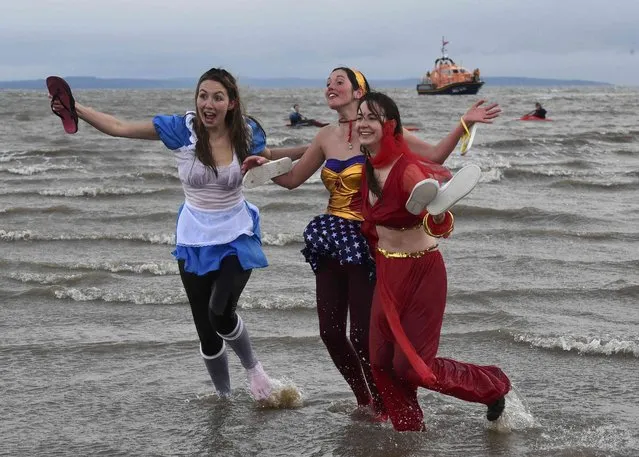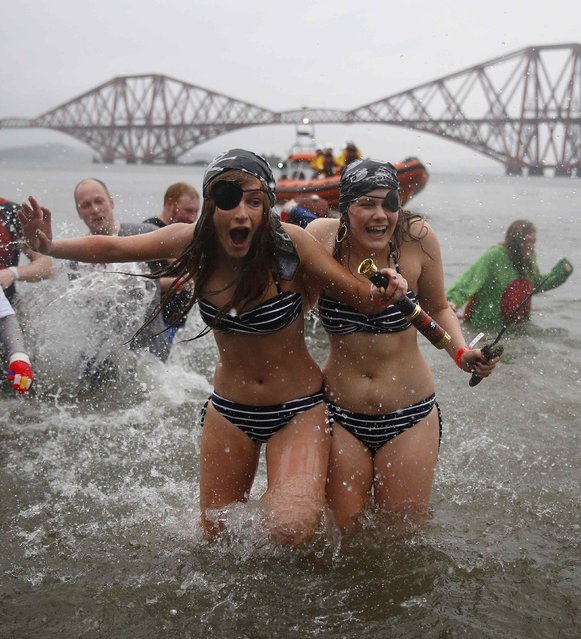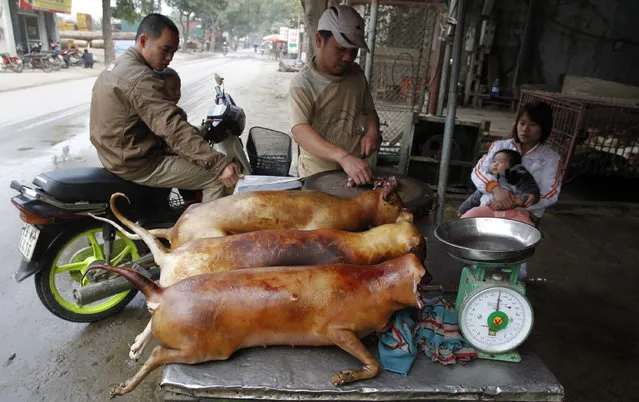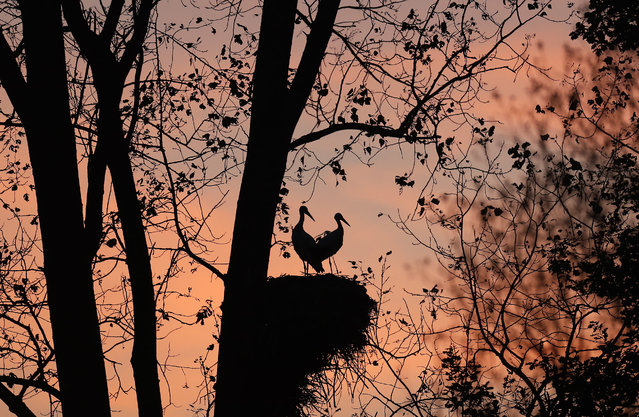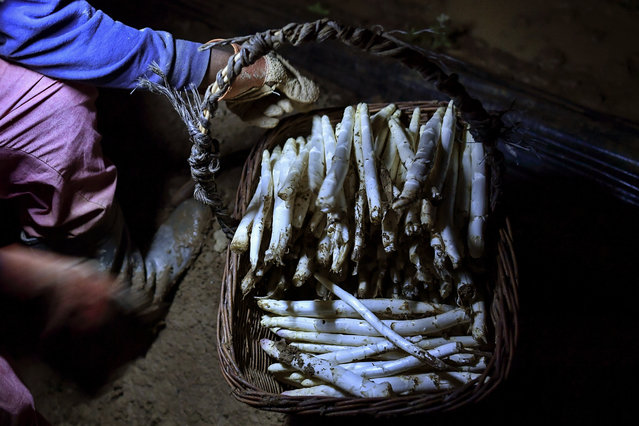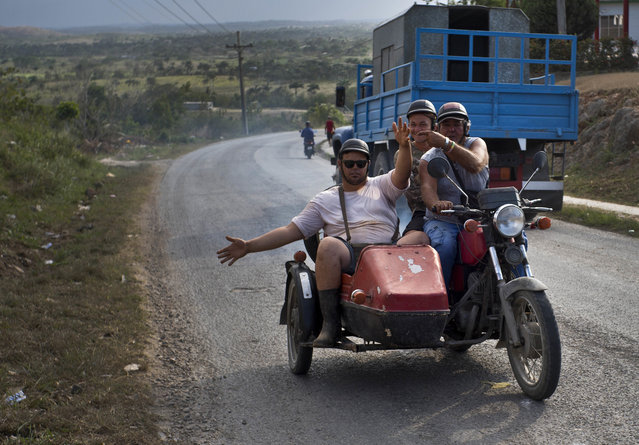
In this April 13, 2018 photo, motorcycle taxi driver Ricardo Medina, 60, transports vegetable vender Rigoberto Herrera Mendez, left, and coconut vendor Osvaldo Ochoa in Campo Florido, east of Havana, Cuba. The three men expressed hope that new government leadership will improve things, saying the country cannot move backwards. “We survive life with our work”, said Medina. (Photo by Ramon Espinosa/AP Photo)
